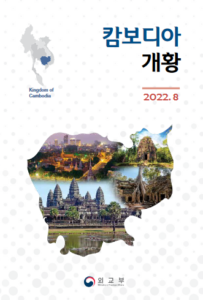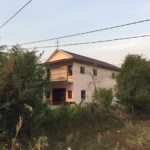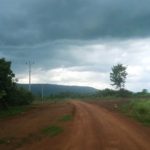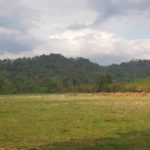캄보디아 알아가기

- 캄보디아 역사
- Cambodian History
1. 고대 및 식민지 시대
가. 고대~앙코르 왕조 (~1863)
• 1세기부터 6세기경까지 메콩 델타 유역을 중심으로 인도 문화의 영향을 받은 후난(Funan) 왕조와 첸라(Chenla) 왕조 존재
• 802년 자야바르만(Jayavarman) 2세가 스스로 신왕(神王)으로 칭하고 앙코르 왕조를 열어 1431년 시암(현 태국)의 침략으로 쇠퇴할 때까지 크메르 민족의 전성기(고대 크메르 왕국 시대) 구가
• 1431년 시암의 침략 후, 19세기 중반 프랑스 식민지가 되기까지 시암과 베트남의 지배를 번갈아 받으며 왕국의 명맥만 유지
나. 프랑스 통치 시대(1863~1953)
• 1863년 캄보디아는 시암과 베트남의 지배를 벗어나기 위해 자진해서 프랑스 보호령으로 편입
• 1884년 노로돔(Norodom) 국왕은 프랑스의 강압으로 명목상의 왕위만 유지하고 통치권을 프랑스에 넘겨주는 협정에 서명
2. 캄보디아 공화국 및 왕국 시대
가. 시하누크 시대 (1941~1970)
• 1941년 프랑스는 당시 19세의 노로돔 시하누크(Norodom Sihanouk)를 왕으로 즉위시켰으나, 시하누크는 1945년 일본의 후원 하에 독립 선언
• 일본이 패전한 후 프랑스가 지배권을 회복하였으나, 1953년 11월 시하누크에게 군사・사법・외교권을 허용, 사실상 독립
• 1955년 시하누크 국왕은 현실정치에 참여하기 위해 아버지 수라마리트에게 왕위를 이양하고 인민사회주의공동체당(Sangkum Reastr Niyum) 총재에 취임, 같은 해 총선에서 압승하여 1970년까지 캄보디아 정국 주도
나. 크메르공화국 시대 (1970~1975)
• 1970년 3월 28일 시하누크 공의 외유 중에 론놀(Lon Nol) 장군이 쿠데타를 일으켜 성공, 시하누크를 모든 공직에서 축출하고 귀국 불허
• 1970년 4월 10일 크메르공화국 수립 선포
• 론놀은 반정부세력을 공산주의자로 간주해 탄압, 크메르루즈의 성장 초래
다. 민주 캄푸치아 시대(1975~1978)
• 1975년 4월 17일 폴포트(Pol Pot)가 이끄는 캄푸치아공산당(크메르루즈, Khmer Rouge)이 프놈펜에 입성, 급진혁명 추진
• 1978년 12월 베트남군이 무력으로 캄보디아 침공
라. 캄푸치아 인민공화국 시대(1979~1989)
• 1979년 1월 친베트남 세력인 헹삼린(Heng Samrin), 체아심(Chea Sim), 훈센(Hun Sen) 등이 이끄는 베트남과의 연합군이 프놈펜에 입성, 캄푸치아 인민공화국 수립
• 1989년 10월 소련・동구권 몰락과 캄보디아 운영의 경제적 부담, 국제사회 비난에 따라 베트남군이 캄보디아에서 철수
마. 캄보디아국 시대 (1989.4.~1993.5.)
• 1989년 4월에 캄보디아 국민혁명당은 국명을 캄보디아국(State of Cambodia)으로, 당명을 캄보디아국민당(Cambodian People’s Party)으로 바꾸고 사유재산 인정, 민영화 추진 등 탈공산주의 추진
• 1990년 UN 안전보장이사회에서 포괄적 캄보디아 평화안 채택
• 1990년 10월 4개 정파, 최고국가평의회(SNC) 구성에 합의
• 1991년 10월 캄보디아 분쟁의 정치적 해결에 관한 파리평화협정 서명, 캄보디아 과도행정기구(UN Transitional Authority of Cambodia, UNTAC)와 최고국가평의회(SNC)에 18개월 동안 통치권을 위임하고, 총선을 통한 신정부 구성 추진
• 1992년 3월 총 45개 국 2만 2천 명으로 구성된 평화유지군이 파병되어 정전협정 준수 여부 감시
바. 캄보디아 왕국 시대(1993.5. ~현재)
• 1993년 5월 23~28일간 UNTAC 주관 하에 1차 총선거 실시
• 1993년 6월 제헌의회가 소집되어 헌법을 채택하고(1993.9.23 공포), 시하누크를 국가수반으로 선출, 캄보디아 왕국 시대 출범(1993.9.24시하누크 국왕 즉위)
– 1993년 총선 결과, 훈신펙당과 캄보디아국민당 간 연정이 구성되어, 훈신펙당 라나리드(Norodom Ranariddh) 왕자가 제1총리, 캄보디아국민당 훈센이 제2총리에 취임
• 1998년 7월 2차 총선 결과에 따라 라나리드 왕자를 국회의장으로, 훈센 캄보디아국민당 부총재를 총리로 하는 제2대 국회 및 제2기 연립정부 출범
• 2003년 7월 3차 총선 이후 1년가량 새 정부 구성이 지연되다가, 2004년 7월 라나리드 왕자를 국회의장으로, 훈센 캄보디아국민당 부총재를 총리로 하는 제3대 국회 및 제3기 연립정부 출범
• 2008년 7월 4차 총선에서 캄보디아국민당이 전체 의석의 3분의 2가 넘는 90석의 의석을 획득하고 제4대 국회 및 제4기 연립정부(훈신펙당 연립) 구성
• 2013년 7월 5차 총선에서 캄보디아국민당이 승리하였으나 의석 수가 대폭 감소(68석)한 반면, 야당인 구국당(CNRP)은 55석을 차지하며 약진
• 2014년 9월 국민당은 부정선거 의혹을 제기하는 야당의 국회 등원 거부로 단독으로 국회를 개원하고 신정부 출범
• 이후 여야 영수 회담을 통해 야당 국회 등원 합의 등 여야 관계가 일시적으로 개선되었으나, 2015년 하반기부터 여야 관계가 경색 국면으로 회귀
• 2017년 6월 제4대 지방선거에서 집권당인 국민당 50.76%, 제1야당인 구국당 43.83%의 득표율로 선거구와 의석 수 면에서 국민당이 승리하였으나, 2012년 지방선거와 같은 압도적인 승리(90% 이상 선거구에서 승리)는 거두지 못한바, ‘국민당의 절반의 승리, 구국당의 약진’으로 평가
• 2017년 9월 3일 구국당의 켐 소카(Kem Sokha) 대표가 모반 혐의로 체포 되었으며, 같은 해 11월 16일에는 대법원의 결정에 따라 구국당이 해산되고 구국당 소속 주요 인사들에 대한 5년간의 정치활동 금지령 내려짐
• 2018년 7월 29일, 주요 야당(구국당)이 부재한 상황에서 비민주적 선거라는 국제사회의 비판 속에 치러진 6차 총선에서 국민당은 76.85%를 득표하며 국회의 전 의석(125석) 차지
•2023년 8월 22일, 훈 마넷 총리 취임
Cambodia has a long and rich history that spans from ancient times to the present day. Here is a brief timeline of some of the major events in Cambodian history:
• 1st-6th centuries: Funan period – early state-like polities in delta and coastal regions, trading contact with India and China, “Indianisation” of Khmer society begins.
• 7th-8th centuries: Chenla period – shift in trade patterns causes decline of Funan, emergence of large kingdoms in inland area, Indianisation continues.
• 9th-13th centuries: Khmer Empire – the peak of Khmer civilization, building of Angkor Wat and other monumental temples, expansion of territory and influence, cultural and artistic achievements.
• 14th-18th centuries: Post-Angkor period – decline of Khmer Empire due to internal strife, Thai and Vietnamese invasions, loss of territory and prestige, conversion to Theravada Buddhism.
• 19th-20th centuries: French colonial period – Cambodia becomes a protectorate of France, French colonial rule lasts for 90 years, modernization and nationalism movements, Japanese occupation during World War II.
• 1953: Independence – Cambodia wins its independence from France under King Norodom Sihanouk, who becomes the dominant political figure for the next two decades.
• 1970: Coup – Prime Minister Lon Nol overthrows Sihanouk in a coup, proclaims the Khmer Republic, and sends the army to fight the North Vietnamese and the communist Khmer Rouge guerrillas, who are supported by Sihanouk in exile.
• 1975-1979: Khmer Rouge regime – Pol Pot and the Khmer Rouge take over Phnom Penh and establish Democratic Kampuchea, a radical Maoist state that attempts to create a classless agrarian society. The regime carries out a brutal genocide that kills at least 1.7 million people, or about a quarter of the population, through executions, starvation, disease, and overwork. The regime also abolishes money, religion, education, and culture, and forces people to evacuate the cities and work in collective farms and labor camps.
• 1979-1989: Vietnamese occupation – Vietnam invades Cambodia and ousts the Khmer Rouge, who retreat to the border areas and continue their guerrilla warfare. Vietnam installs a puppet government called the People’s Republic of Kampuchea, led by Hun Sen, a former Khmer Rouge commander who defected to Vietnam. The international community does not recognize the Vietnamese-backed regime and supports a coalition of resistance groups, including the Khmer Rouge, the royalists, and the nationalists, who form the Coalition Government of Democratic Kampuchea (CGDK).
• 1989-1991: Withdrawal and peace talks – Vietnam withdraws its troops from Cambodia, following the end of the Cold War and the collapse of the Soviet Union, its main ally and sponsor. The United Nations sponsors peace talks among the four Cambodian factions, resulting in the Paris Peace Agreements, which end the civil war and pave the way for a UN-supervised transition to democracy.
• 1992-1993: UN administration – The United Nations Transitional Authority in Cambodia (UNTAC) takes over the administration of the country, with the mandate to disarm the warring factions, repatriate refugees, organize elections, and rebuild the country. The Khmer Rouge refuses to cooperate with UNTAC and continues to fight. UNTAC holds the first free and fair elections in Cambodia’s history, which are won by the royalist party FUNCINPEC, led by Prince Norodom Ranariddh, Sihanouk’s son. However, the Cambodian People’s Party (CPP), led by Hun Sen, refuses to accept the results and threatens to secede. A power-sharing agreement is reached, with Ranariddh as the first prime minister and Hun Sen as the second prime minister. Sihanouk returns to Cambodia and becomes the king again.
• 1994-1998: Factional fighting and Khmer Rouge collapse – Tensions and clashes between the two ruling parties escalate, leading to a violent coup in 1997, in which Hun Sen ousts Ranariddh and consolidates his power. The Khmer Rouge also suffers from internal divisions and defections, and loses its remaining territory and support. Pol Pot dies in 1998, and the Khmer Rouge officially surrenders in 1999.
• 1999-present: Hun Sen’s rule – Cambodia joins the Association of Southeast Asian Nations (ASEAN) in 1999, and becomes a member of the World Trade Organization (WTO) in 2004. Hun Sen and his CPP win the elections in 1998, 2003, 2008, 2013, and 2018, and maintain their grip on power, despite allegations of fraud, corruption, and human rights violations. The opposition party, the Cambodia National Rescue Party (CNRP), led by Sam Rainsy and Kem Sokha, gains popularity and challenges the CPP, especially in the 2013 elections, which are disputed by the CNRP. The CPP responds by cracking down on the opposition, the media, and civil society, and dissolves the CNRP in 2017, effectively turning Cambodia into a one-party state. The international community condemns the CPP’s actions and imposes sanctions and pressure on Cambodia. Hun Sen defends his legitimacy and sovereignty, and seeks closer ties with China, which provides economic and military aid to Cambodia.

캄보디아 개황 (2022. 8) 대한민국외교부
- 2024년 캄보디아 연휴 및 공휴일
- Public Holidays in Cambodia 2024
- 1.1.(월). 신년
- 1.7.(일). 학살정권에 대한 승리의 날
- 3.8.(금). 국제 여성의 날
- 4.13.(토)./14.(일)./15.(월)./16.(화). 캄보디아 신년(쫄쯔남)
- 5.1.(수). 노동절
- 5.14.(화). 시하모니 국왕 탄생일
- 5.22.(수). 석가 탄신/서거일
- 5.26.(일). 왕실 농경의 날
- 6.18.(화). 국왕 모후 탄생일
- 9.24.(화). 제헌절
- 10.1.(화)./2.(수)./3.(목). 캄보디아 추석(프춤번)
- 10.15.(화). 시아누크 전 국왕 서거일
- 10.29.(화). 시하모니 국왕 즉위 기념일
- 11.9.(토). 독립기념일
- 11.14.(토)./15.(일)./16.(월). 물축제
- 12.29.(일). 캄보디아평화의날
- 1 January (Monday) – International New Year’s Day
- 7 January (Sunday) – Victory Day over Genocide
- 8 March (Friday) – International Women’s Day
- 13, 14, 15, 16 April (Saturday-Tuesday)– Khmer New Year
- 1 May (Wednesday) – International Labour Day
- 14 May (Tuesday) – His Majesty Preah Bat Samdech Preah Boromneath King Norodom Sihamoni’s Birthday
- 22 May (Wednesday) – Visak Bochea Day
- 26 May (Sunday) – Royal Plowing Ceremony
- 18 June (Tuesday) – Her Majesty the Queen-Mother NORODOM MONINEATH SIHANOUK of Cambodia
- 24 September (Tuesday) – Constitutional Day
- 1, 2, 3 October (Tuesday, Wednesday, Thursday) – Pchum Ben Festival
- 15 October (Tuesday) – Mourning Day of the Late King-Father NORODOM SIHANOUK of Cambodia
- 29 October (Tuesday) – Coronation Day of His Majesty Preah Bat Samdech Preah Boromneath NORODOM SIHAMONI, King of Cambodia
- 9 November (Saturday) – National Independence Day
- 14, 15, 16 November (Thursday, Friday, Saturday) – Water Festival*
- 29 December (Sunday) – Peace Day












